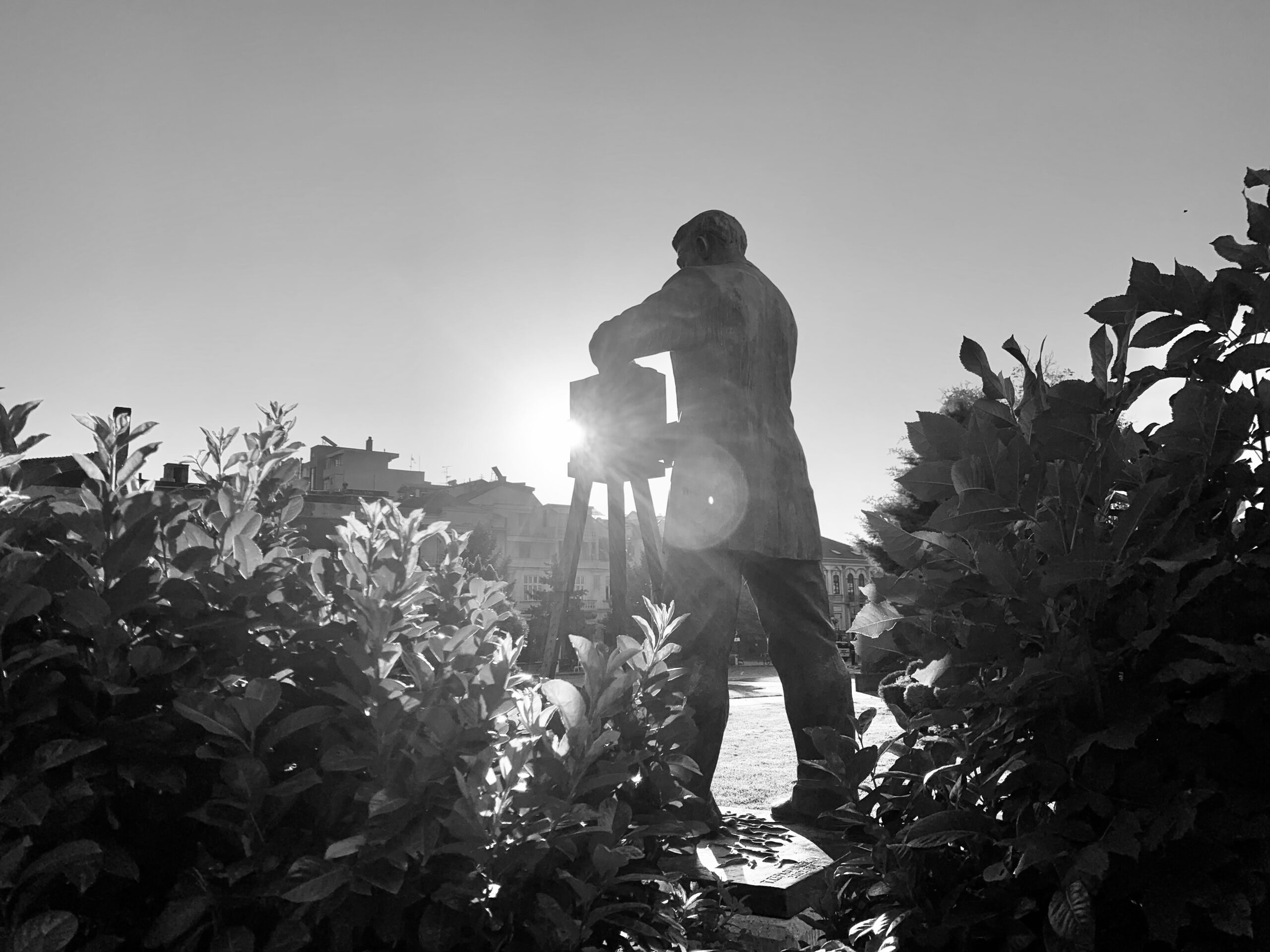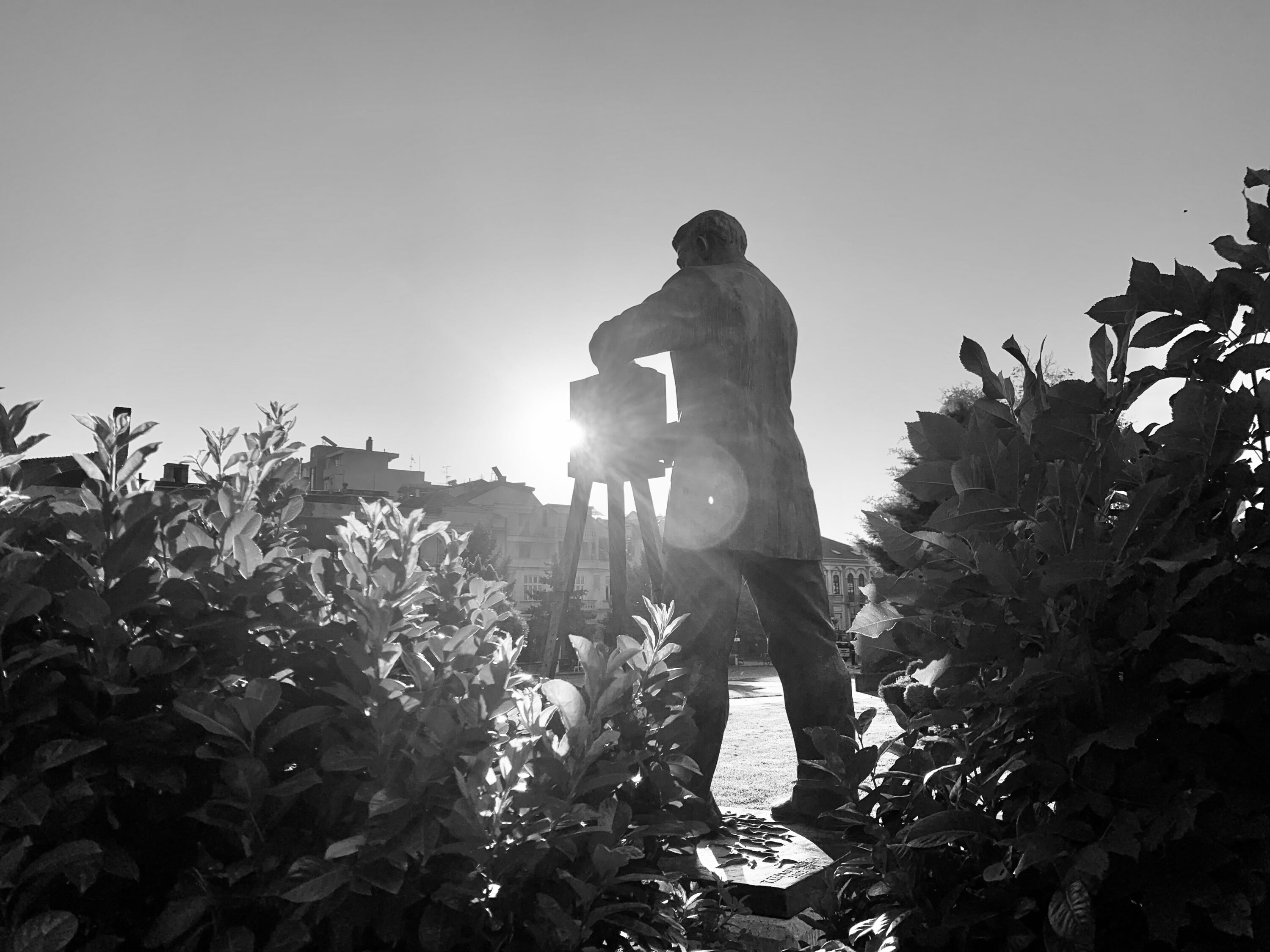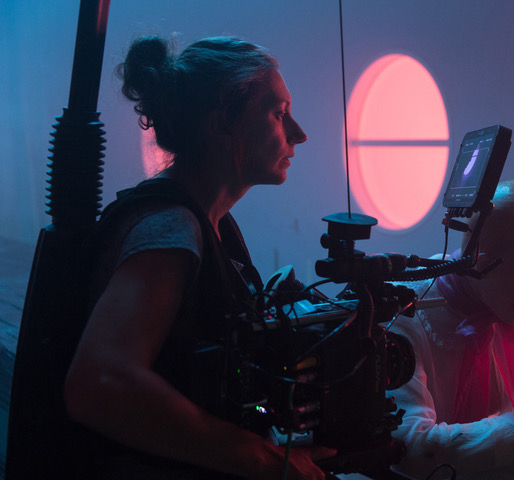ARRI ALEXA Studio
Arri visade sin tredje version av Alexa, nu med spegelreflexsökare och 4:3 sensor. Den stora fördelen med optisk sökare är att fotorafen ser bilden i högsta upplösning och kan avgöra om skärpan höll under hela tagningen, vilket är svårt att se i en elektronisk sökare.
Med den stora sensorn. 4:3 är det möjligt att avvända anamorfiska objektiv 2x för scope.
ARRI will preview the third ALEXA sister at NAB.
The current two cameras, ALEXA and ALEXA Plus, will be joined
by the third expected sibling, ALEXA Studio, in late 2011. She
is the eagerly-awaited star previously known in concept only as
ALEXA OV (Optical Viewfinder). As the top of the line camera,
ALEXA Studio will have an optical viewfinder, spinning mirror
shutter and a full 4:3 sensor.
ALEXA Studio’s name has significant provenance. Like the
ARRICAM Studio, the ALEXA Studio is equipped with a quiet
mirror shutter and an optical viewfinder. The new viewfinder has
been specifically designed for ALEXA, and accepts both Arriflex
435 and ARRICAM style eyepieces and viewfinder extensions.
Camera operators can look forward to looking at the live, optical,
groundglass images.
Best of all, camera operators will be able to accurately judge whether
the shot was in focus or not. A slight buzz in focus is not easy to
see in any electronic finder, and requires careful monitoring and
careful set etiquette in video village on a high resolution monitor
with a sympathetic DIT or DP gingerly helping the camera operator
determine whether another take might be required.
As any SOC member will attest, a shot is either in focus or out—
you either do another take or move on. There is no waffling or
discussion. The ALEXA Studio works to that studio-borne
methodology.
For very dark night shots, remote head and Steadicam
configurations, you’ll be able to quickly remove the optical finder
and attach an electronic finder—or no finder at all.
ALEXA Studio’s full 4:3 sensor is the same size as 35mm 4-perf.
This is rare among digital production cameras. With an image area
the same as a familiar film ARRICAM or 435, ALEXA Studio can
be used with 2x anamorphic lenses. (ARRIFLEX D-21’s sensor is
4:3, 23.76 x 17.82mm; the Phantom HD Gold is 25.6 x 25.6 mm;
Weisscam HS-2 MK II is 22.18 x 22.18 mm). Most other digital
cameras, including ALEXA and ALEXA Plus, have 3-perf height—
instead of 4-perf—image sensors.
Having a full 4:3 sensor is huge. I’ll bet the boys at Vantage Film
in Weiden, makers of Hawk Anamorphic lenses, will be first in
line for ALEXA Studio cameras. Hawk V-Lite lenses come in 2x
and 1.3x anamorphic. The 1.3x ratio nicely stretches a 16:9 3-perf
image to the magical 2.40 projection format. However, a 2x ratio
anamorphic lens on a 16:9 3-perf sensor must be composed as a
cropped 4:3 frame within that 16:9 area. That’s why the ALEXA
Studio, with its larger image area and optical finder is unique.
What is it about anamorphic 2x? They have an elusively difficult
to describe look and image quality that many directors and
cinematographers love. Many of the great films of all time were
shot in 2x anamorphic: Apocalypse Now, Blade Runner, Chinatown,
the Indiana Jones films, Alien, The Last Samurai and the latest Star
Trek film.
ALEXA Studio’s full 4:3 sensor, optical viewfinder and other highend
features make this camera a bright choice. ARRI is at NAB
Booth C4337. They’ll have lots of other updates, including news of
High Speed Mode to 120 fps for ALEXA, electronic anamorphic
desqueeze, software 4.0 and lots more.
Jon Fauer, ASC




